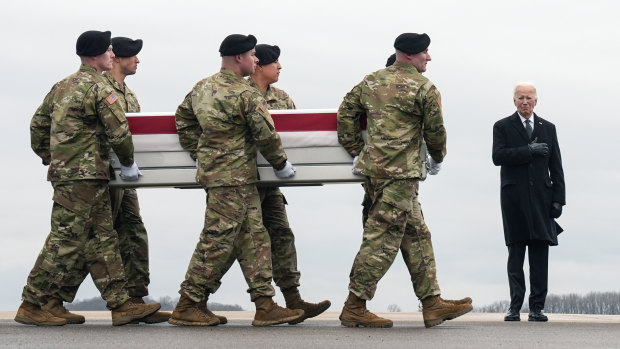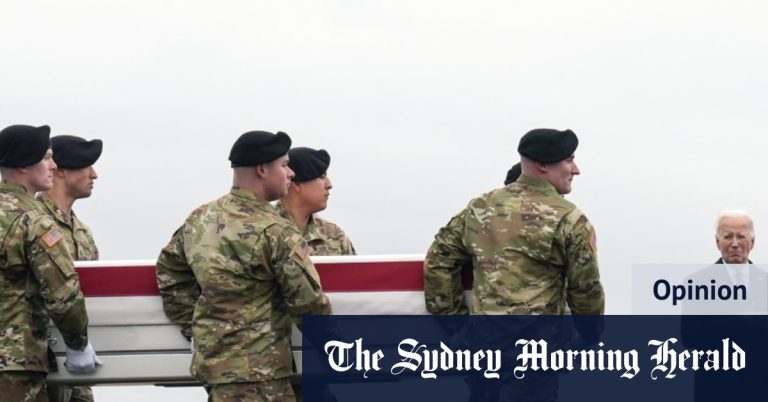The United States and the Islamic Republic of Iran have reached a turning point in their long-standing hostility.
Following the killing of three American soldiers and the wounding of many others in a drone attack on the American military base Burj 22 in Jordan, which Washington blamed on the Iranian-backed Iraqi group Kataib Hezbollah, the United States began a military campaign against this group and similar organizations in Iraq. And Syria.
The response option chosen by President Joe Biden is to weaken Iran's regional capability against the United States and avoid direct conflict with Iran. But the danger this strategy entails, amid the specter of the ongoing war in Gaza, could easily lead to further disintegration of the Middle East.

President Joe Biden stands as an Army team moves the case containing the remains of 24-year-old LaDon Sanders.credit: AP
The United States and Iran have been locked in a vicious cycle of hostility since the emergence of Iran's Shiite-dominated Islamic regime 44 years ago. Following the overthrow of the pro-Western regime of Mohammad Reza Shah in the revolution, the regime's founder, Ayatollah Ruhollah Khomeini, condemned the United States for its regionally “hegemonic” support of the Shah's dictatorial rule and criticized Israel for its occupation of the region. The Palestinian territories, especially Jerusalem – the third holiest site in Islam. The seizure of the US Embassy in Tehran by armed Khomeini supporters in 1979, in which 52 embassy employees were held hostage for 444 days, and the US rejection of the Islamic regime as a fundamentalist regime and an anomaly in world politics, weakened relations and set in motion further ties. The foundations of permanent hostility between the two sides.
The Islamic regime has feared an American, Israeli, or joint attack, while America and its regional allies have long viewed the Islamic Republic as a major threat to their security interests in the region. Washington pursued a policy of containing the Republic and imposed severe sanctions on it, especially regarding its nuclear program, due to suspected military objectives. Tehran, in turn, did everything in its power to protect its security.
Given the magnitude of American and Israeli firepower, and the presence of many American military bases across the Persian Gulf, Iran has chosen a defensive strategy based on asymmetric warfare. This strategy included not only strengthening the regime's conventional military power, led by the vanguard of the Iranian Revolutionary Guard, but also supporting a network of armed groups in Iraq, Syria, Lebanon, Palestine, and Yemen to effectively deter or combat any outside group. attacks. The regime considers its proxy forces essential to its security.
The regime has invested heavily in a variety of short-, medium- and long-range missiles, as well as drones capable of striking enemy targets within a 20,000 km radius, and in developing a nuclear program for “peaceful purposes.” Moreover, it has established close strategic cooperation relations with Russia and China.
However, while the Islamic Republic and the United States have often looked at each other, Iran and Israel have been embroiled in an murky war for years, with each attacking each other's assets mostly outside their territories.

